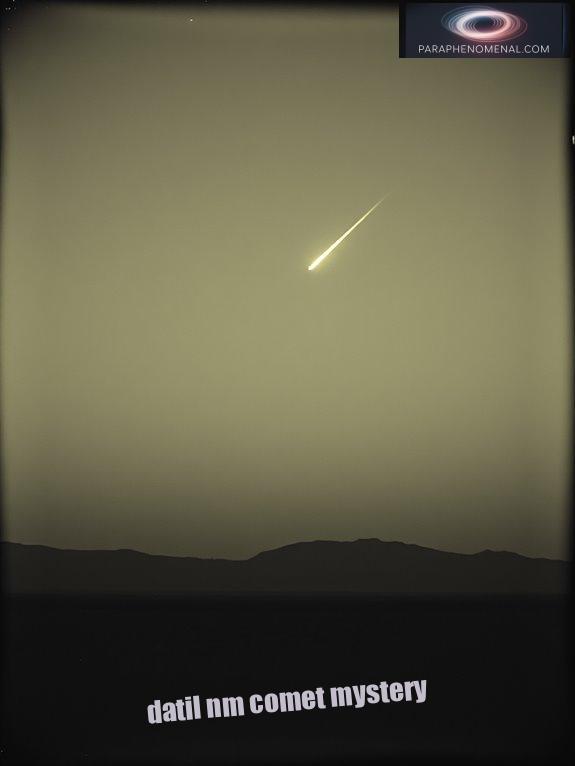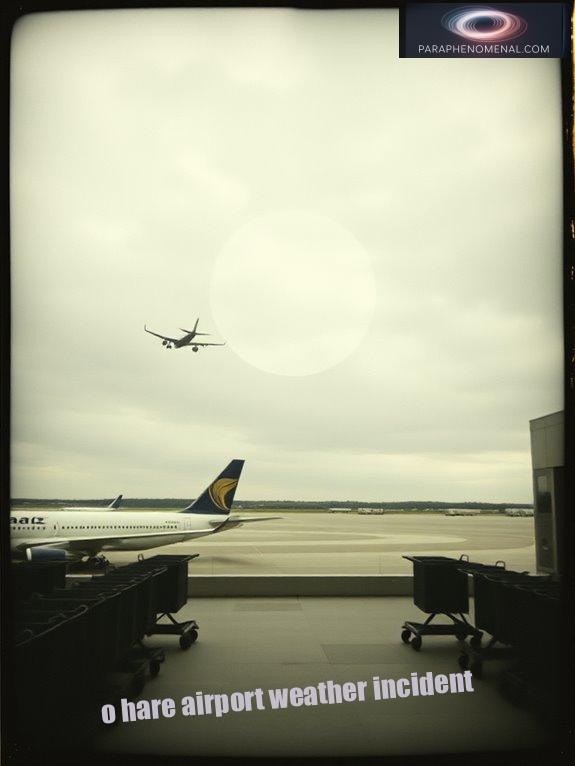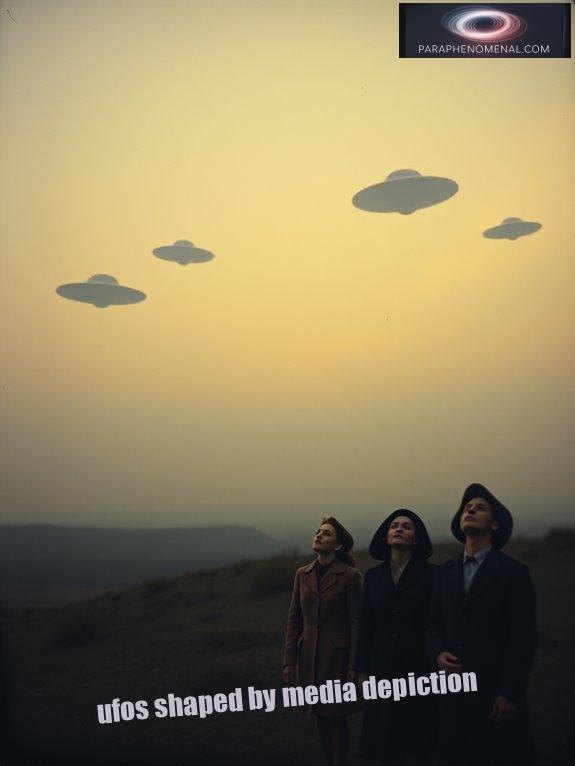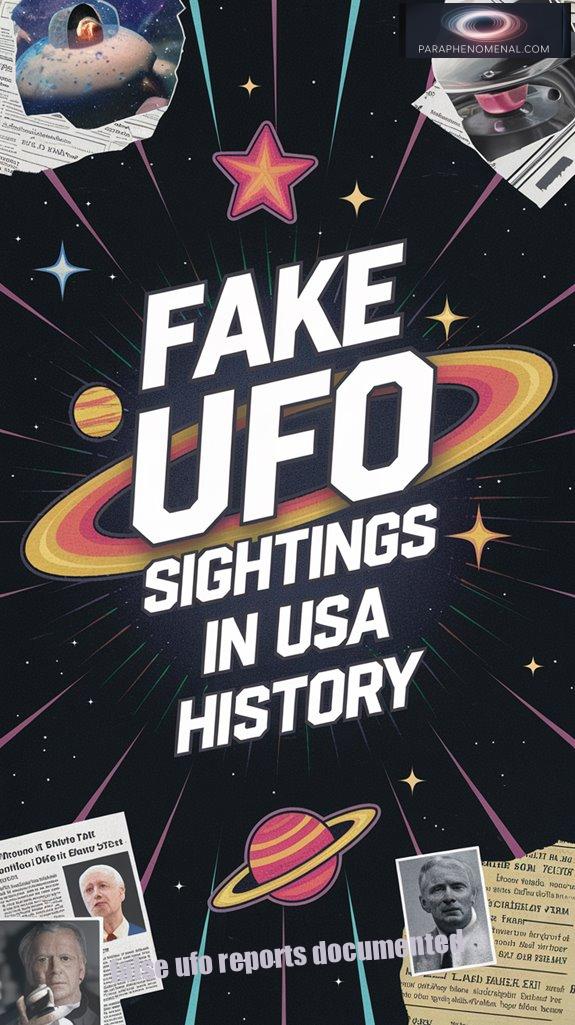Have you ever wondered how many so-called UFO sightings are actually just clever illusions?
Many of these reports come from misidentifications or outright hoaxes.
Take Kenneth Arnold's famous 1947 sighting, for instance. It sparked a frenzy, yet most sightings are rooted in confusion.
The Redlands, CA cloud misidentification is a prime example of how nature can play tricks on our eyes.
Even the well-known Chicago O'Hare sighting has been linked to weather phenomena.
Understanding these complexities can really change the way we view paranormal activity.
Curious about what else might be hiding in the shadows?
My Encounter with the Unexplained: An Investigation into the Paranormal
I'll never forget the night I ventured into an old, abandoned house for a paranormal investigation.
As I stepped inside, a chilling breeze wrapped around me, and I felt an inexplicable presence.
The air was thick with history, and I couldn't shake the feeling that I wasn't alone.
While exploring, I discovered strange markings on the wall, sparking questions about past inhabitants.
Could they have been linked to UFO sightings in the area?
That night opened my eyes to the thin line between reality and the unknown, making me question everything I thought I knew about the paranormal.
From ghostly whispers to unexplained lights, the world of the unexplained is vast and full of surprises.
Quick Takeaways
- Many UFO sightings in the USA are often misidentified natural phenomena, leading to misconceptions and reports of "fake" sightings.
- Hoaxes have been created for entertainment or publicity, contributing to the number of fake UFO sightings throughout history.
- The media's sensationalized coverage of UFOs has fueled public interest and confusion regarding legitimate sightings versus hoaxes.
- Psychological factors and social media can amplify misinterpretations and the spread of misinformation about UFO sightings.
- Notable historical cases, such as the Redlands, CA incident, demonstrate how misidentifications can lead to false perceptions of UFOs.
Kenneth Arnold's Sighting: The Beginning of a Phenomenon

On June 24, 1947, Kenneth Arnold, a private pilot from Boise, Idaho, experienced an event that would change how we view the skies.
While flying near Mount Rainier, he spotted nine round, saucer-like objects zooming past him at an astonishing speed of over 1,200 miles per hour. This sighting marked the dawn of the modern UFO era, igniting widespread media coverage and public fascination. Nine shiny unidentified flying objects were observed moving in a distinctive echelon formation, further adding to the intrigue of the sighting. The term "flying saucer" emerged from Arnold's description, capturing imaginations across the nation. Notably, this sighting prompted government investigations into UFO phenomena, as officials began to take reports of unidentified objects more seriously.
While flying near Mount Rainier, Kenneth Arnold witnessed nine saucer-like objects that sparked the modern UFO phenomenon.
Before long, reports of similar sightings flooded in, prompting questions about what lay beyond our world.
At ParaPhenomenal, we explore these mysteries, aiming to provide clarity and understanding into a phenomenon that continues to intrigue us all.
The Datil, NM Incident: From Mystery to Comet

While the Datil, NM incident mightn't be as widely recognized as other UFO sightings, it still piques curiosity about what people might've seen in the skies.
When I explore this event, I find it's shrouded in mystery, much like various other unexplained sightings across New Mexico. Historical UFO sightings in this region often contribute to the fascination surrounding such events.
Curiously, bright comets or meteor showers often confuse eyewitnesses, leading them to believe they've witnessed something extraterrestrial. In fact, one of the best-documented UFO sightings involved a police sergeant who reported seeing an egg-shaped craft in Socorro, New Mexico.
Limited records mean we can only speculate what locals might've encountered that day.
It's easy to get swept up in the excitement of these stories, and at ParaPhenomenal, we created this website to explore just that—the allure and intrigue of the unknown, encouraging everyone to seek the truth behind the mysteries.
The Redlands, CA Misidentification: Lenticular Cloud Confusion

Lenticular clouds, which can easily confuse observers, played a significant role in the Redlands, California incident of December 13, 1958. Witnesses reported a mysterious object in the sky, leading to excitement and speculation.
However, the truth emerged through investigation. The U.S. Air Force, utilizing Project Blue Book, determined that what people saw was likely a lenticular cloud. These clouds form on the leeward side of mountains and often take on unusual, saucer-like shapes. Lenticular clouds are known to develop when sufficient moisture is present above mountain peaks, which adds to their distinct appearance. This phenomenon is often mistaken for paranormal activity, leading to widespread misconceptions about unexplained sightings.
In a world enthusiastic for freedom and understanding, misidentifications like this can spark curiosity. By studying these phenomena, we can differentiate between natural occurrences and supposed extraterrestrial visitors, providing clarity in a domain often clouded by mystery.
At ParaPhenomenal, we seek to explore these intriguing stories.
The Chicago O'Hare Airport Encounter: Weather or Hoax?

Could it really be that a busy airport like Chicago O'Hare was the scene of a mysterious UFO sighting? On November 7, 2006, around 4:15 p.m., twelve United Airlines employees reported seeing a silent, metallic, saucer-shaped object near Gate C-17.
Witnesses claimed it hovered for five minutes, creating a hole in the cloud layer. The FAA dismissed it as a "weather phenomenon," specifically a "hole-punch cloud." In a subsequent review, the FAA attributed the sighting to a weather phenomenon rather than conducting a further investigation. Recent polls indicate that public perception of UFO sightings has shifted, with more people open to the possibility of extraterrestrial encounters.
Inconsistencies in witness descriptions raised questions about the validity of the sighting. While skeptics argue that weather explains the event, it remains a fascinating case for UFO enthusiasts. At ParaPhenomenal, we explore such mysteries, encouraging individuals to question what lies beyond the ordinary.
Media Influence on Public Perception of UFOs

As public interest in UFOs grew after World War II, the media played an essential role in shaping how these phenomena were perceived. The first major sighting, known as "flying saucers," captured imaginations starting in 1947, fueled by Cold War tensions and new technologies. Initially, media coverage often resembled sensational true crime stories, inviting both wonder and skepticism. Over time, the narrative shifted. No longer merely a source of ridicule, serious reporting emerged, particularly from credible outlets like The New York Times. This helped reduce stigma, allowing more open discussions about unidentified aerial phenomena (UAPs). By focusing on mystery and national security implications, the media has shaped a more complex understanding of UFOs, fostering curiosity and debate. Moreover, the climate of fear from nuclear threats contributed to the heightened interest in these phenomena during this period. Additionally, the media's portrayal of government secrecy surrounding UFOs has further intensified public intrigue and speculation. That's why we created ParaPhenomenal—to explore these mysteries together.
Government Responses and the Rise of Hoaxes

While many people remain fascinated by UFOs, government responses to these mysterious sightings have often been met with skepticism and confusion.
Government investigations have revealed a complex relationship with the public, leading to an increase in hoaxes. In fact, government UFO studies have significantly shaped public perception, often complicating the narrative surrounding these phenomena.
- Attention-seeking motives drive many hoaxers to create false sightings.
- Civilian groups sometimes exaggerate reports to gain credibility.
- Cultural influences from films and TV shows contribute to public belief in hoaxes.
Despite the serious nature of UFO inquiries, agencies like the CIA have historically concealed information, fostering distrust. This secrecy has led to a rise in conspiracy theories, making it difficult for enthusiasts to discern fact from fiction. Notably, between 1947 and 1969, a total of 12,618 reported sightings were investigated, many of which were later attributed to misapprehensions or hoaxes.
Here at ParaPhenomenal, we aim to clarify these issues, helping you navigate the murky waters of UFO phenomena.
References
- https://sgp.fas.org/library/ciaufo.html
- https://prologue.blogs.archives.gov/2018/04/16/ufos-natural-explanations/
- https://science.howstuffworks.com/space/aliens-ufos/the-10-most-legitimate-cases-of-u-f-o-sightings.htm
- https://www.bu.edu/articles/2023/ex-intelligence-official-us-government-ufo/
- https://www.britannica.com/topic/unidentified-flying-object
- https://en.wikipedia.org/wiki/Kenneth_Arnold_UFO_sighting
- https://www.cna.org/our-media/podcasts/coming-in-from-the-cold/3
- https://airandspace.si.edu/stories/editorial/1947-year-flying-saucer
- https://www.livescience.com/33351-flying-saucers-turn-64-look-back-origins-ufos.html
- https://en.wikipedia.org/wiki/Kenneth_Arnold

Leave a Reply